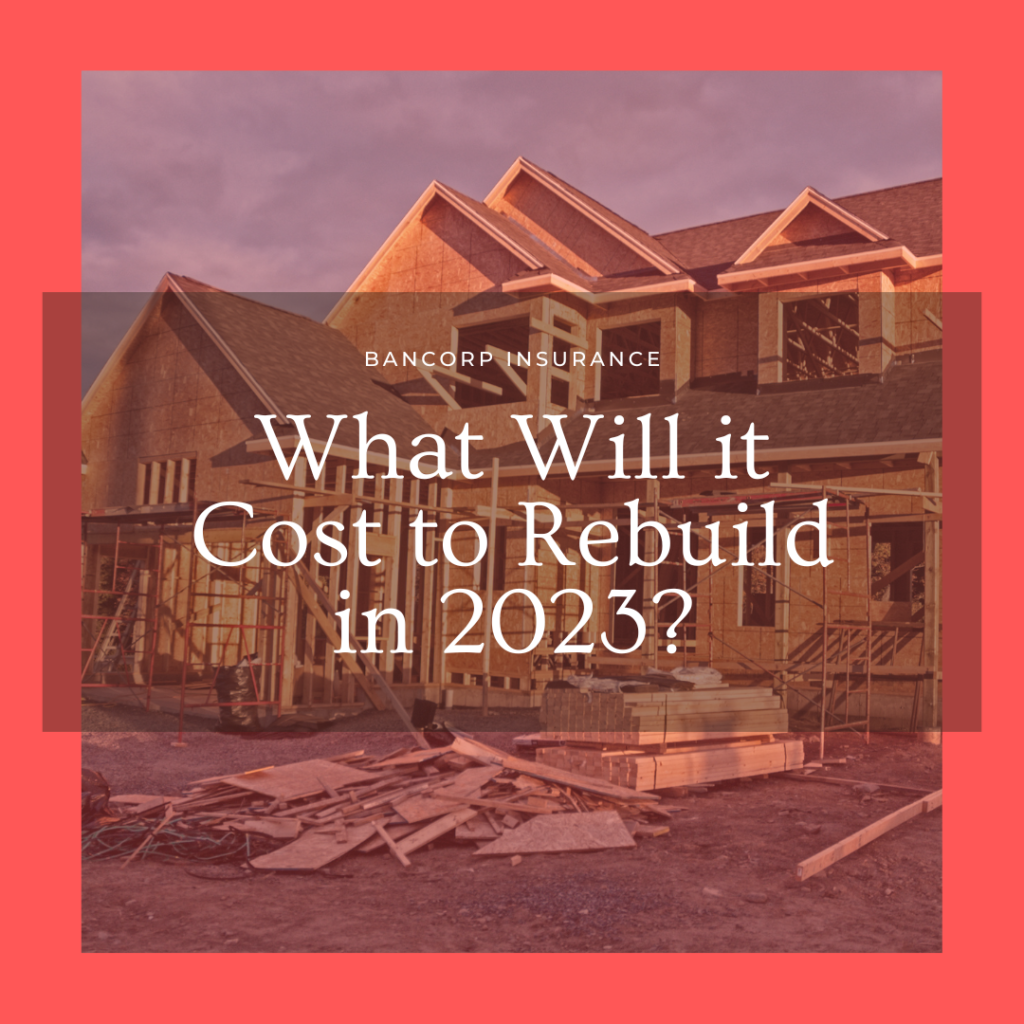What Will It Cost to Rebuild My Home in 2023

The construction industry continues to face many supply challenges, the real estate market is facing record high mortgage rates and less buyers, and the insurance industry is facing more and more catastrophes from storms. How does this affect the cost to rebuild or build a new home?
According to the Insurance Institute, “The term “catastrophe” in the property insurance industry denotes a natural or man-made disaster that is unusually severe. An event is designated a catastrophe by the industry when claims are expected to reach a certain dollar threshold, currently set at $25 million, and more than a certain number of policyholders and insurance companies are affected.”
Over the last 20 years, wind/hail/flood damage made up 7.1 percent of total catastrophe insured losses. Fires, including wildland fires accounted for 2.0 percent.
III reports that, “Disaster losses along the coast are likely to escalate in the coming years, in part because of huge increases in development. One catastrophe modeling company predicts that catastrophe losses will double every decade or so due to growing residential and commercial density and more expensive buildings.”
What Will It Cost to Rebuild My Home in 2023
The short answer is that building, or rebuilding homes and commercial buildings alike is not only expensive but challenging. The fluctuating lack of materials across all aspects of the construction industry and the lack of workers drives up the cost and the time needed to complete a project.
The ongoing issues have brought the NAHB to get involved by urging the White House to act on shortages. “NAHB has held several conversations on this issue with U.S. Department of Commerce officials but the shortage of transformers and other electrical components is spreading across the country and imperiling many construction projects and the ability to provide affordable housing.”
Over the last couple of years, it’s been a big topic of discussion in our office with many customers about how much it would cost to rebuild their structure after a loss like fire, flood, Winter storms or some other covered loss.
Unknown Scope of Work Affect the Cost to Rebuild
The scope of work is often unknown until the loss actually occurs. Because part of the structure is still intact and there are other existing elements, such as outdoor fixtures, fences, landscaping and neighbors that limit working space and access; workers need to be more careful in order to minimize damage to existing elements, making the process more time-consuming.
Older properties also face a challenge when trying to match repairs to the original construction condition. Materials may be subject to special order to make sure they match the remaining or original materials. Older properties may also have architectural detail such as ornate trim and molding that may require more skilled craftsmen to replace.
There is also the additional cost of debris removal. This is part of the limit of insurance in a commercial policy and must be added to the reconstruction cost. Your homeowner’s insurance also includes debris removal as part of your policy limit, however, should the cost of debris removal go over your coverage limit in your homeowner’s policy, an additional 5% over and above the limit is afforded to cover the additional debris removal cost. In either case in new building construction starts from the ground up.
Ensuring Your Home is Covered for All the Potential Losses
Potential losses will vary by region. In Central Oregon, wildfire and Winter storm damage is a larger risk than say tornados. But what about things like flood and earthquake? While types of losses are not common in Central Oregon, that does not mean they cannot happen. And these coverages are not part of the standard homeowner’s policy, they are stand-alone coverages.
It’s very important to understand your homes potential risks and discuss coverages with your agent to ensure that in the event of a loss you can afford to rebuild because your loss is insured. Otherwise, the cost to rebuild will be even more substantial.
Small Projects and Timing
New construction costs are often reduced when the builder is able to take advantage of volume discounts by buying in bulk. In a reconstruction project, materials are usually purchased in small quantities.
If a fire affects a widespread area, construction material can become scarce, driving up material and labor costs.
There is an inability for both the general and the subcontractor to plan for a reconstruction project. Subcontractors used in large projects are easily scheduled and usually discounted, since the subcontractor can depend on steady work for a longer period of time.
In a reconstruction project, there is extra pressure to complete the work quickly to reduce business downtime or business income loss for the insured.
Market Value vs Replacement Cost to Rebuild
Market value of a property is a very poor indicator of reconstruction cost. Market value is influenced by the availability of real estate, economic factors such as the number of foreclosed or distressed properties available, or the conditions of the mortgage market. A buyer’s market as opposed to a seller’s market will also influence the market value of a property. Using market value as base price for what it will cost you to reconstruct your building or home could leave you under-insured in the case of a partial covered loss.
Bancorp’s insurance agents are available to provide you with a free review and consultation. Contact Us – Bancorp Insurance Call 800-452-6826
Disclaimer: This content is provided for general information purposes and is not intended to be used in place of consultation with our agents.





